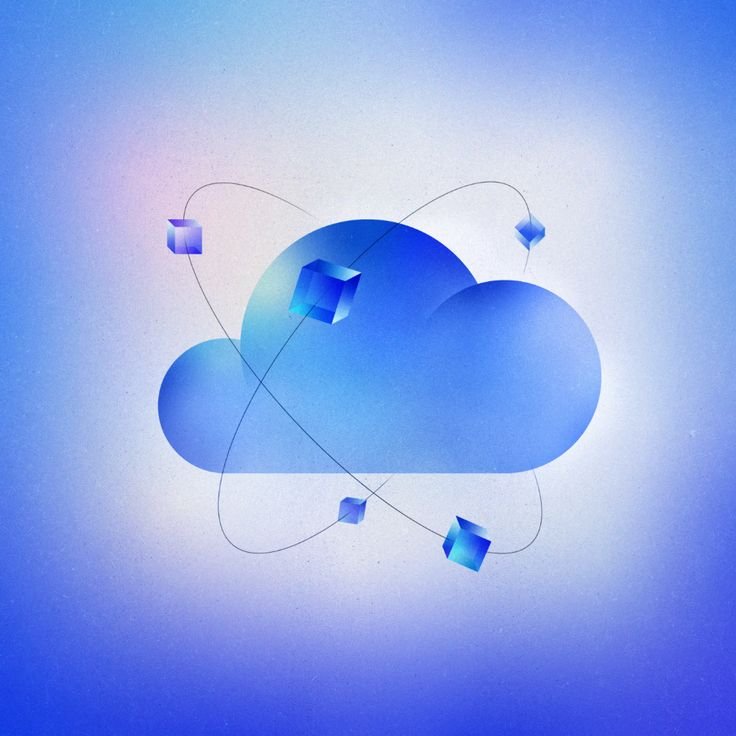Cloud computing has transformed how businesses and individuals manage, store, and process data. Instead of relying on local servers or personal computers, cloud computing allows users to access computing resources over the internet. This shift has led to various cloud computing models, each designed to meet different needs. In this blog, we’ll explore the main cloud computing models—Infrastructure as a Service (IaaS), Platform as a Service (PaaS), Software as a Service (SaaS), and Function as a Service (FaaS)—and discuss their unique features and benefits.
1. Infrastructure as a Service (IaaS)
Infrastructure as a Service (IaaS) is one of the most fundamental cloud computing models. It provides virtualized computing resources over the internet, such as virtual machines, storage, and networking. IaaS enables organizations to rent infrastructure from a cloud provider instead of investing in and managing their own physical hardware.
Key Features of IaaS:
- Scalability: IaaS allows businesses to scale their infrastructure up or down based on demand, making it ideal for fluctuating workloads.
- Cost-Efficiency: By renting infrastructure, businesses can reduce capital expenditures and pay only for the resources they use.
- Control: Users have significant control over their infrastructure, including the operating system and applications they run on the virtual machines.
Popular IaaS Providers:
- Amazon Web Services (AWS): Offers a wide range of IaaS services, including EC2 for computing power and S3 for storage.
- Microsoft Azure: Provides scalable IaaS solutions with support for Windows and Linux environments.
- Google Cloud Platform (GCP): Known for its robust infrastructure services, including Compute Engine and Cloud Storage.
Use Cases:
- Disaster Recovery: Businesses can use IaaS to replicate their infrastructure in the cloud, ensuring continuity in case of a data center failure.
- Development and Testing: Developers can quickly provision and decommission virtual machines to test new software applications.
2. Platform as a Service (PaaS)
Platform as a Service (PaaS) offers a higher level of abstraction than IaaS. It provides a platform that includes the operating system, middleware, and runtime environment, allowing developers to build, deploy, and manage applications without worrying about the underlying infrastructure.
Key Features of PaaS:
- Simplified Development: PaaS streamlines the development process by providing pre-configured environments, enabling developers to focus on writing code.
- Integrated Tools: PaaS platforms often come with integrated development tools, databases, and APIs, reducing the complexity of application development.
- Automatic Scaling: PaaS solutions can automatically scale resources to handle varying workloads, ensuring optimal performance.
Popular PaaS Providers:
- Heroku: A cloud PaaS that supports multiple programming languages and is known for its ease of use and quick deployment.
- Google App Engine: A fully managed platform that allows developers to build and deploy applications at scale.
- Microsoft Azure App Services: Offers a range of PaaS solutions for building and hosting web applications, RESTful APIs, and mobile backends.
Use Cases:
- Web Application Development: PaaS is ideal for developing and hosting web applications, as it provides the necessary tools and frameworks.
- API Development: Developers can use PaaS to quickly create and deploy APIs, with built-in support for versioning and scaling.
3. Software as a Service (SaaS)
Software as a Service (SaaS) is perhaps the most widely used cloud computing model. It delivers software applications over the internet, eliminating the need for users to install and maintain software on their local devices. SaaS applications are typically accessible through a web browser and are managed entirely by the service provider.
Key Features of SaaS:
- Accessibility: Users can access SaaS applications from any device with an internet connection, making it convenient for remote work and collaboration.
- Automatic Updates: SaaS providers handle software updates and maintenance, ensuring that users always have access to the latest features and security patches.
- Subscription-Based Pricing: SaaS applications are usually offered on a subscription basis, allowing users to pay for only what they need.
Popular SaaS Providers:
- Salesforce: A leading SaaS provider that offers cloud-based CRM solutions.
- Google Workspace: A suite of productivity tools, including Gmail, Google Docs, and Google Drive, available through a SaaS model.
- Microsoft 365: Offers cloud-based versions of Microsoft Office applications, such as Word, Excel, and PowerPoint.
Use Cases:
- Customer Relationship Management (CRM): SaaS solutions like Salesforce help businesses manage customer interactions and data.
- Collaboration Tools: SaaS platforms like Slack and Microsoft Teams facilitate communication and collaboration among remote teams.
4. Function as a Service (FaaS)
Function as a Service (FaaS), also known as serverless computing, is a relatively new cloud computing model that allows developers to run code in response to events without provisioning or managing servers. FaaS abstracts away the infrastructure, enabling developers to focus solely on writing functions.
Key Features of FaaS:
- Event-Driven Execution: FaaS runs functions in response to specific triggers, such as HTTP requests or changes in a database.
- Pay-Per-Use Pricing: Users are charged only for the time their functions run, making FaaS a cost-effective solution for event-driven workloads.
- Scalability: FaaS platforms automatically scale resources to handle the execution of functions, ensuring high availability and performance.
Popular FaaS Providers:
- AWS Lambda: A popular FaaS service that allows developers to run code in response to events from AWS services or HTTP endpoints.
- Google Cloud Functions: A serverless execution environment for building and connecting cloud services.
- Azure Functions: Offers a FaaS platform with support for a wide range of programming languages and integration with Azure services.
Use Cases:
- Microservices Architecture: FaaS is ideal for building microservices, where each function performs a specific task within a larger application.
- Data Processing: FaaS can be used to process data in real-time, such as transforming data from one format to another or aggregating data from multiple sources.
Conclusion
Cloud computing offers a variety of models to meet the diverse needs of businesses and developers. Whether you need the flexibility of IaaS, the streamlined development environment of PaaS, the convenience of SaaS, or the event-driven scalability of FaaS, there is a cloud computing model that can help you achieve your goals. Understanding the differences between these models will allow you to choose the right solution for your specific needs, enabling you to leverage the full potential of cloud computing.





